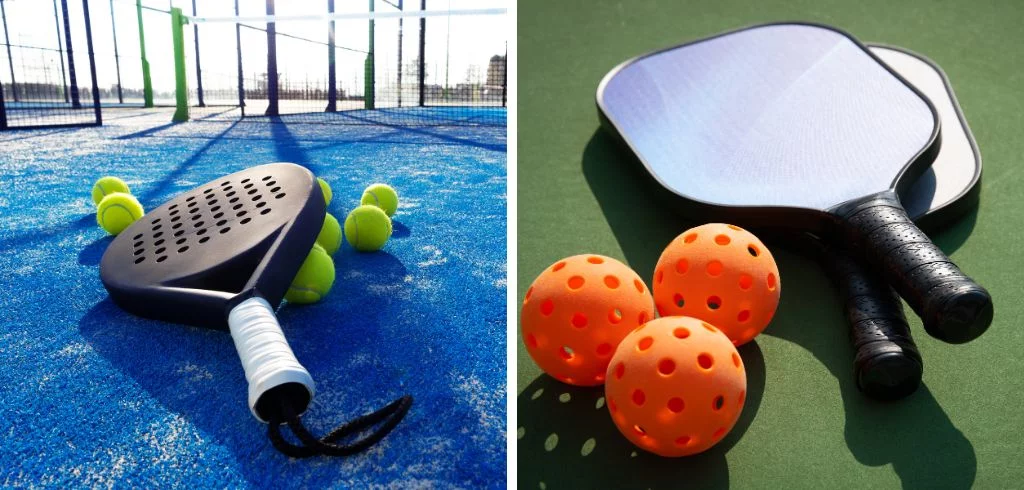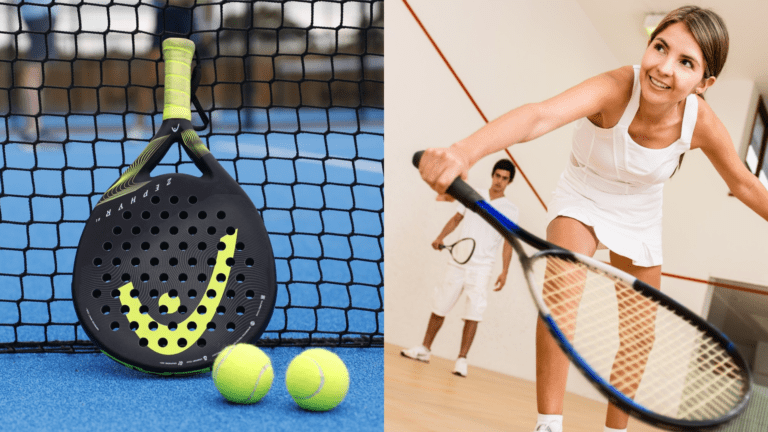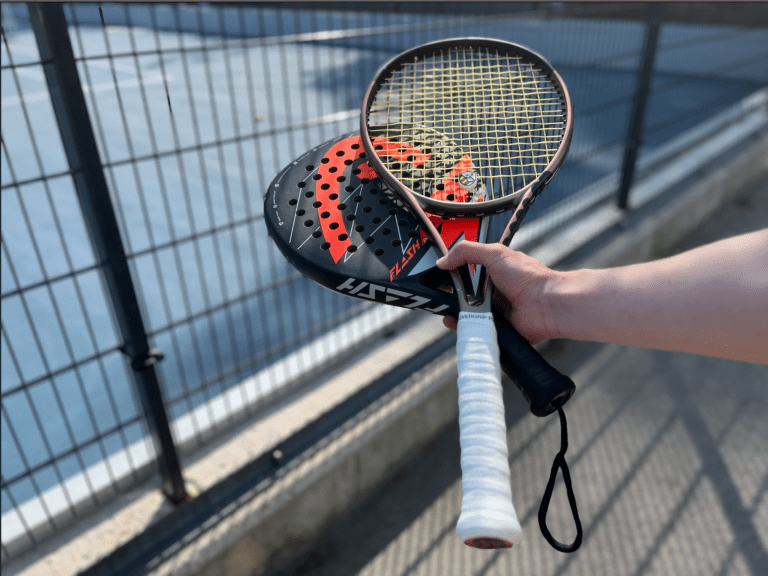If you’ve ever found yourself in a heated debate over whether padel or pickleball reigns supreme, congratulations—you’ve officially entered the racket sport battleground. And as someone who considers themselves a padel expert (self-proclaimed, but still), I’m here to settle this once and for all.
Now, before any pickleball fanatics start sharpening their paddles, let’s get one thing straight: both sports are great. But are they the same? Not even close. They may share a few similarities—like being easier on the knees compared to traditional tennis—but lumping them together is like saying soccer and American football are just variations of the same thing because they both involve a ball.
So, let’s break this down properly.
The Court – Size Matters (And So Do Walls)
One of the biggest differences between padel and pickleball is the court itself. If you’re used to open spaces, pickleball courts might feel just right. But if you like a bit of chaos (like I do), padel’s enclosed walls add an entirely new dimension to the game.
Padel Court:

- 20 meters long by 10 meters wide (roughly 66 feet by 33 feet)
- Surrounded by glass walls and metal mesh fencing
- The walls are in play, meaning you can use them strategically
- Played in doubles 99% of the time
Pickleball Court:

- 13.41 meters long by 6.1 meters wide (44 feet by 20 feet)
- No walls—just a net and an open court
- Can be played in singles or doubles
- The game is mostly won through precise shots and quick reflexes
If you like slamming the ball against walls to outsmart your opponent, padel is your game. If you prefer the simplicity of aiming for well-placed drop shots, pickleball might be more up your alley.
Equipment – Paddles, Balls, and… Spin?
Both sports use paddles, but they are about as similar as a butter knife and a samurai sword.
Padel Paddle:
- No strings—just a solid, perforated surface
- Slightly heavier, weighing between 350-400 grams (12-14 oz)
- Allows for serious spin and power shots
- Feels like an extension of your arm once you get used to it
Pickleball Paddle:
- Also stringless, but usually made of lightweight composite materials
- Smaller and lighter, weighing around 200-250 grams (7-9 oz)
- Designed for control rather than power
And then, there are the balls.
- Padel balls: Look almost identical to tennis balls but with slightly less pressure.
- Pickleball balls: Hard plastic with holes (kind of like a Wiffle ball), making them move slower but bounce lower.
If you enjoy smashing the ball with a spin-heavy slice that bounces unpredictably, padel gives you that. If you like controlled rallies and dink battles at the net, pickleball is more your speed.

Gameplay – The Flow of the Match
This is where the real differences show. Padel thrives on fast-paced, unpredictable rallies that can go on forever. Pickleball is all about precision, angles, and patience.
How Padel is Played:
- Always doubles (unless you’re training alone, in which case, you should reconsider your life choices)
- Underhand serve with at least one bounce before hitting
- The ball can hit the walls after bouncing, which adds strategy
- Aggressive play, smashes, and retrieving shots off the glass make it incredibly dynamic
How Pickleball is Played:
- Can be singles or doubles (doubles is more common)
- Serve must be underhand but straight over the net (no bounce before hitting it)
- The ball must bounce once on each side before volleys are allowed (this is called the two-bounce rule)
- Less emphasis on power, more on precision and positioning
Padel is like a mix of tennis and squash on steroids. Pickleball is more like ping pong on a larger scale, requiring touch and patience.
Popularity – Who’s Playing What?
Padel’s Global Takeover
Padel is huge in Spain, Argentina, Mexico, and growing fast across Europe. The professional circuit, the World Padel Tour, has turned players into celebrities, and in Spain, it’s the second most popular sport after soccer.
If you visit any European city, chances are you’ll find padel courts packed with players of all ages, from teenagers to retirees. It’s social, fast-paced, and honestly, a little addictive.
Pickleball’s North American Domination
Pickleball, on the other hand, has taken North America by storm. It’s massive in the U.S. and Canada, especially among older players who love the lower impact on joints compared to tennis.
In the U.S., even celebrities like Leonardo DiCaprio and Bill Gates are obsessed with it. Plus, it’s expanding into pro leagues with major prize money up for grabs.
Which One Should You Play?
Ah, the golden question. It really depends on what you’re looking for.
Pick pickleball if:
- You want a sport with a lower learning curve
- You enjoy strategic placement over raw power
- You want to play on a smaller court with less running
Go for padel if:
- You love high-energy, dynamic games with wall rebounds
- You want a more physically demanding sport
- You enjoy the strategy of using walls to your advantage
Final Verdict
Both padel and pickleball have their place in the racket sport world. But if you ask me—which you kind of did by reading this—padel wins. It’s faster, more dynamic, and just straight-up more fun.
That said, if someone invites me for a game of pickleball, I won’t say no. But deep down, I’ll be thinking about padel the entire time.
#1 Resource For Padel Guides, News and Reviews Daily Stay Ahead with Expert Insights, Product Reviews, and Guides.





